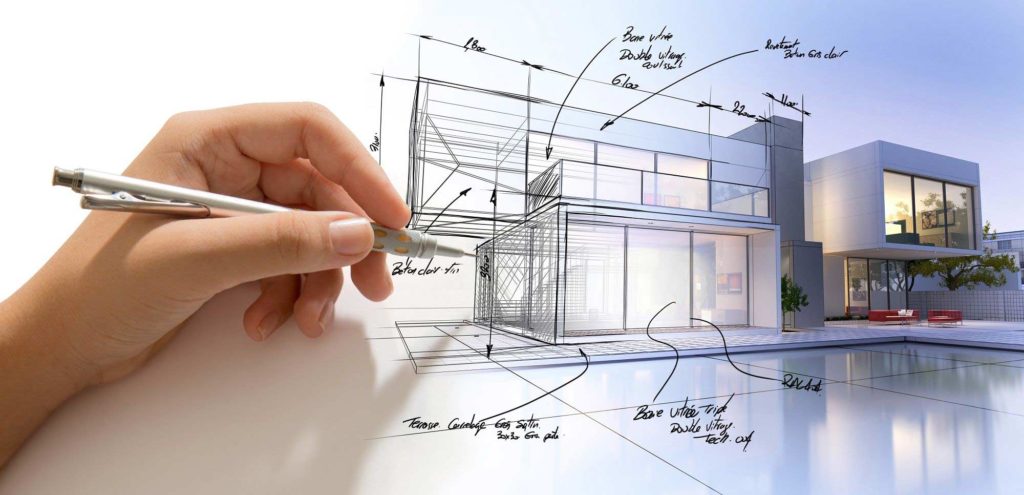The Role of Sustainability and Technology in Modern Architect Practices
Sustainability and technology are reshaping modern style in ways you may not expect. By embracing green products and clever innovations, designers are not just developing structures; they're crafting environments that boost our lifestyle. This shift isn't practically aesthetics or functionality; it's concerning establishing a responsible approach to our world's future. What's driving this transformation, and how can these changes impact your area?
The Relevance of Sustainable Design
Sustainable architecture is necessary not simply for the setting but also for improving our lifestyle. When you accept sustainable layout, you're not simply reducing your carbon impact; you're developing rooms that promote health and well-being. Envision staying in a home that utilizes all-natural light, enhances air quality, and decreases energy expenses. You'll really feel much more linked and comfy to nature.
Moreover, lasting design usually causes more powerful neighborhoods. When buildings are developed with environment-friendly methods, they can influence others to follow suit, promoting a culture of sustainability. You'll see boosted building values and a higher sense of satisfaction in your surroundings.
Last but not least, by prioritizing sustainability, you're buying the future. You're guaranteeing that future generations delight in a much healthier world and lively areas. When you consider your following task, think concerning just how lasting design can elevate your life and those around you.
Ingenious Materials Transforming Structure Practices
As you check out innovative materials in architecture, you'll find that eco-friendly construction materials are improving exactly how we think of sustainability. Recycled web content technologies are providing new life to waste, while wise material technologies enhance developing performance. These innovations not only promote eco-friendliness however additionally press the boundaries of style.
Biodegradable Building And Construction Products
While standard construction products typically add to ecological degradation, eco-friendly construction products are becoming a viable alternative that changes building methods. You can discover choices like mycelium, bamboo, and hempcrete, which not just reduce waste but likewise promote sustainability. These materials damage down normally at the end of their lifecycle, decreasing land fill payments. By including eco-friendly choices into your styles, you're not just improving aesthetic allure; you're also making a favorable influence on the world. And also, they typically require much less power to create, better decreasing your job's carbon impact. As you adjust to these cutting-edge materials, you'll find that they supply longevity and convenience, enabling you to produce structures that align with modern-day worths of sustainability and obligation.
Recycled Content Developments
Over the last few years, innovative materials with high recycled material have actually reinvented building methods, offering architects exciting brand-new options - Architect. You can now integrate materials like recycled steel, which not only minimizes waste yet additionally boasts impressive stamina. Recycled glass is an additional wonderful choice, offering visual appeal while minimizing ecological impact

Smart Material Technologies
Smart product technologies are improving the means you assume about constructing methods, using vibrant options that adjust to transforming conditions. These ingenious products, such as self-healing concrete and thermochromic glass, boost building efficiency and sustainability. Think of structures that can get used to temperature level adjustments or repair themselves when damaged-- these developments are no more simply ideas. By incorporating smart materials, you can develop energy-efficient styles that reply to their setting, lowering general energy usage. The capacity to adjust and keep track of in real-time streamlines maintenance and lengthens the life expectancy of buildings. As you welcome these modern technologies, you're not just introducing; you're contributing to a much more sustainable future in design, merging functionality with ecological obligation.
The Assimilation of Smart Technologies in Style
As innovation develops, integrating smart solutions right into building design becomes necessary for creating efficient and lasting areas. You can include wise innovations like constructing management systems, which maximize energy usage and enhance occupant convenience.
Including Net of Things (IoT) gadgets allows for seamless interaction amongst numerous structure systems, allowing you to make data-driven decisions that enhance functionality. Smart products that reply to ecological changes can better enhance your layout, offering dynamic services to ever-changing conditions.
Power Effectiveness and Renewable Resource Solutions
While numerous architects concentrate on aesthetic appeals, prioritizing power performance and renewable resource services is vital for sustainable design. You can begin by including passive solar style, which maximizes all-natural light and warm, minimizing dependence on fabricated lights and heating systems. Utilize high-performance insulation and energy-efficient windows to minimize power loss.
Do not neglect about eco-friendly energy systems-- install solar panels or wind generators to produce clean energy on-site. You can additionally think about integrating geothermal home heating and cooling systems for a more lasting temperature policy.
By selecting energy-efficient devices and lighting, you'll not just lower power usage however also lower functional prices for building passengers.
Including these principles right into your designs not only profits the environment however additionally enhances the structure's appeal and value. Eventually, your commitment to energy efficiency and renewable resource will establish your tasks apart in an affordable market.
Water Preservation Approaches in Modern Design
Including water conservation methods right into contemporary architecture is necessary for developing sustainable structures that reduce environmental impact. You can accomplish this by incorporating rain harvesting systems, which gather and keep rain for watering and non-potable uses. Carrying out low-flow components and wise watering systems additionally decreases water usage, guaranteeing efficient usage throughout the building.
Consider utilizing drought-resistant landscape design, which requires less water and advertises biodiversity. Integrating permeable paving materials enables rainwater to infiltrate the ground, reducing runoff and reenergizing groundwater products.
Furthermore, installing greywater recycling systems can repurpose water from sinks and showers for toilet flushing or watering, more conserving resources.
The Impact of Biophilic Design on Wellness
Biophilic style brings nature inside your home, and you'll discover its positive impacts on your wellness and happiness. By improving indoor air top quality and attaching you Home Page with natural environments, these areas can change your everyday experience. Let's explore just how incorporating these features can increase your overall health.
Nature's Impact on Health and wellness
Just how does our setting form our wellness? When you include aspects of nature right into your environments, it can substantially improve your physical and psychological health and wellness. Biophilic design, which emphasizes all-natural light, plants, and organic materials, cultivates a feeling of link to the outdoors. This link can reduce stress and anxiety, boost state of mind, and improve cognitive function. You may find that areas filled up with greenery encourage creativity and efficiency, making your day-to-day tasks really feel more satisfying. Furthermore, natural environments can aid you really feel more kicked back and focused, promoting total health. By prioritizing nature in your environment, you're not just enhancing your area; you're also nurturing your health and wellness and happiness. Welcoming biophilic style is a step toward a much healthier way of life.
Enhancing Indoor Air Top Quality
While numerous individuals focus on aesthetic appeals and functionality in layout, enhancing indoor air top quality plays an important duty in your overall health. By incorporating biophilic style elements, you can boost air top quality naturally. Focusing on these elements in your layout will not just raise your area however also promote a feeling of calmness and well-being.
Connection With All-natural Aspects
When you get in touch with natural environments in your space, you not just enhance its aesthetic allure yet also greatly increase your wellness. Biophilic layout encourages you to include features like plants, natural light, and natural products. These elements create a soothing ambience, reducing stress and anxiety. Research study shows that being around nature can boost your state of mind and cognitive feature, aiding you feel more focused and effective. When you welcome the outdoors inside, you might discover far better air quality and raised comfort. Easy adjustments, like including a living wall or huge home windows, can profoundly impact your experience (Architect). Eventually, integrating nature right into your setting leads you to a much healthier, better way of living, promoting a much deeper connection to the globe around you.
Future Trends in Sustainable Architectural Practices
As the globe faces pressing environmental obstacles, engineers are increasingly accepting cutting-edge methods to sustainability that redefine just how we layout and construct. You'll see a surge in biophilic design, integrating nature into city rooms to improve health and decrease energy usage. Smart innovations, like AI and IoT, are simplifying energy management in buildings, enhancing source usage, and decreasing waste.
Moreover, modular building is acquiring traction, permitting faster, extra efficient structure procedures while reducing environmental effect. Using lasting materials, such as redeemed timber and recycled metals, is ending up being basic method. As you discover here explore these trends, anticipate a shift toward circular design, emphasizing the lifecycle of products and promoting reuse and recycling.
These forward-thinking approaches not only address ecological problems however additionally create healthier, a lot more durable neighborhoods. By staying informed about these trends, you can help form a sustainable future in style.
Regularly Asked Concerns
Just How Can Sustainability Affect Job Spending Plans and prices?
Sustainability can substantially affect task prices and budgets. You may find that preliminary financial investments in eco-friendly products or innovations bring about long-lasting savings via energy performance, reduced waste, and possible federal government incentives, ultimately balancing the overall costs.
What Accreditations Exist for Lasting Design?
You'll find a number of qualifications for sustainable style, including LEED, BREEAM, and the Living Building Difficulty. These accreditations help you show your commitment to sustainability and can boost your job's reputation and interest customers.
Just How Does Neighborhood Society Influence Lasting Design?
Regional society forms sustainable style by showing neighborhood worths, products, and customs. You'll locate that integrating regional aesthetic appeals and methods not just values heritage but also improves the functionality and approval of your architectural jobs.
What Duty Does Customer Education Play in Lasting Practices?
Customer education's crucial for promoting lasting techniques. investigate this site When you notify customers regarding benefits, prices, and environmental effects, you encourage them to make educated choices, promoting a collaborative method that enhances the job's total sustainability.

Just How Can Architects Determine the Success of Sustainability Efforts?
You can gauge the success of sustainability campaigns by tracking power consumption, examining material performance, and event comments from customers. Normal audits and comparisons against criteria will certainly aid you refine your techniques and showcase renovations efficiently.
By incorporating clever products, you can create energy-efficient styles that react to their setting, lowering overall energy usage.While numerous designers focus on aesthetics, focusing on energy efficiency and sustainable power options is vital for sustainable design. Biophilic style, which stresses natural light, plants, and organic materials, fosters a feeling of link to the outdoors. Biophilic layout motivates you to integrate features like plants, all-natural light, and natural products. As you explore these fads, expect a shift toward round design, stressing the lifecycle of products and promoting reuse and recycling.